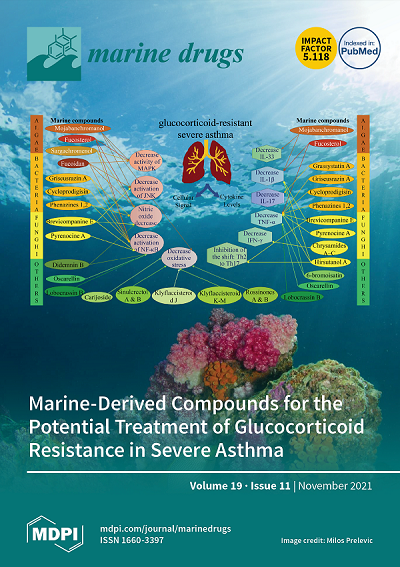环路1中的单个氨基酸取代可改变α-芋螺毒素RegIIA对α7烟碱乙酰胆碱受体的选择性
IF 4.9
2区 医学
Q1 CHEMISTRY, MEDICINAL
引用次数: 0
摘要
α-芋螺毒素是从锥蜗牛毒液中提取的富含二硫化物的多肽,被认为是治疗 nAChR 相关疾病的潜在分子探针和药物线索。然而,对不同 nAChR 亚型的低特异性限制了许多 α-conotoxins 的进一步应用。本研究合成了一系列襻1氨基酸取代的突变体,并通过电生理学方法评估了这些突变体的效力和选择性。结果表明,loop1丙氨酸扫描突变体[H5A]RegIIA和[P6A]RegIIA阻断rα7 nAChR的IC50分别为446 nM和459 nM,而它们对rα3β2和rα3β4亚型的抑制作用微乎其微,这表明第五和第六个氨基酸残基对RegIIA的有效性和选择性具有重要作用。随后,研究人员设计并合成了第二代突变体,其中[H5V]RegIIA 和[H5S]RegIIA 与原生 RegIIA 相比,对 rα7 nAChR 的选择性显著提高,效力相当。总之,这些发现深入揭示了 RegIIA 的结构-活性关系,并为进一步修饰和优化 α-conotoxins 及其他活性肽提供了独特的视角。本文章由计算机程序翻译,如有差异,请以英文原文为准。
Single Amino Acid Substitution in Loop1 Switches the Selectivity of α-Conotoxin RegIIA towards the α7 Nicotinic Acetylcholine Receptor
α-Conotoxins are disulfide-rich peptides obtained from the venom of cone snails, which are considered potential molecular probes and drug leads for nAChR-related disorders. However, low specificity towards different nAChR subtypes restricts the further application of many α-conotoxins. In this work, a series of loop1 amino acid-substituted mutants of α-conotoxin RegIIA were synthesized, whose potency and selectivity were evaluated by an electrophysiological approach. The results showed that loop1 alanine scanning mutants [H5A]RegIIA and [P6A]RegIIA blocked rα7 nAChR with IC50s of 446 nM and 459 nM, respectively, while their inhibition against rα3β2 and rα3β4 subtypes was negligible, indicating the importance of the fifth and sixth amino acid residues for RegIIA’s potency and selectivity. Then, second-generation mutants were designed and synthesized, among which the analogues [H5V]RegIIA and [H5S]RegIIA showed significantly improved selectivity and comparable potency towards rα7 nAChR compared with the native RegIIA. Overall, these findings provide deep insights into the structure–activity relationship of RegIIA, as well as revealing a unique perspective for the further modification and optimization of α-conotoxins and other active peptides.
求助全文
通过发布文献求助,成功后即可免费获取论文全文。
去求助
来源期刊

Marine Drugs
医学-医药化学
CiteScore
9.60
自引率
14.80%
发文量
671
审稿时长
1 months
期刊介绍:
Marine Drugs (ISSN 1660-3397) publishes reviews, regular research papers and short notes on the research, development and production of drugs from the sea. Our aim is to encourage scientists to publish their experimental and theoretical research in as much detail as possible, particularly synthetic procedures and characterization information for bioactive compounds. There is no restriction on the length of the experimental section.
 求助内容:
求助内容: 应助结果提醒方式:
应助结果提醒方式:


